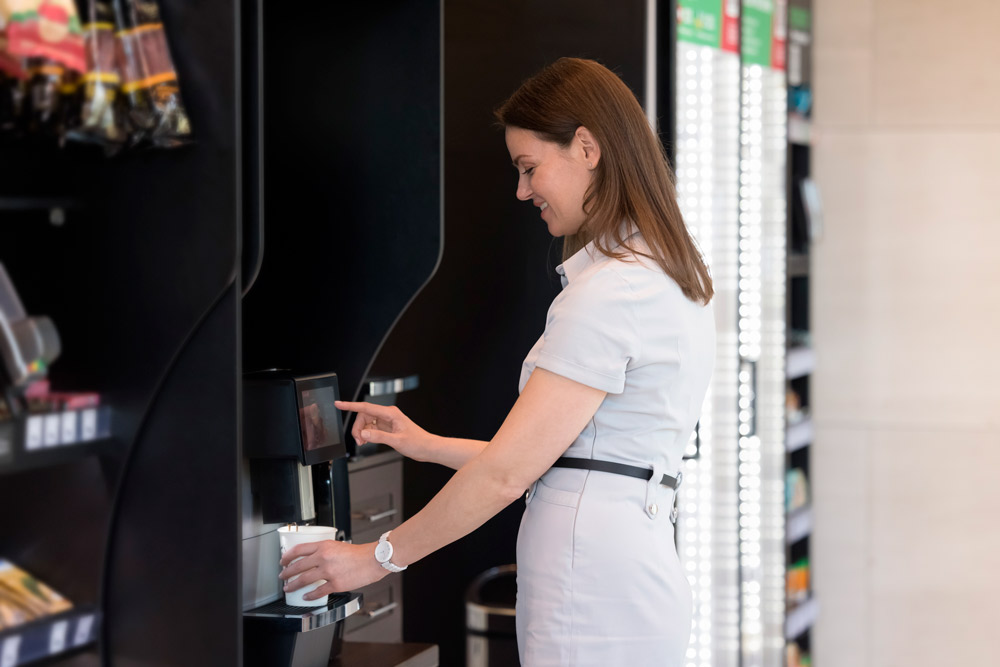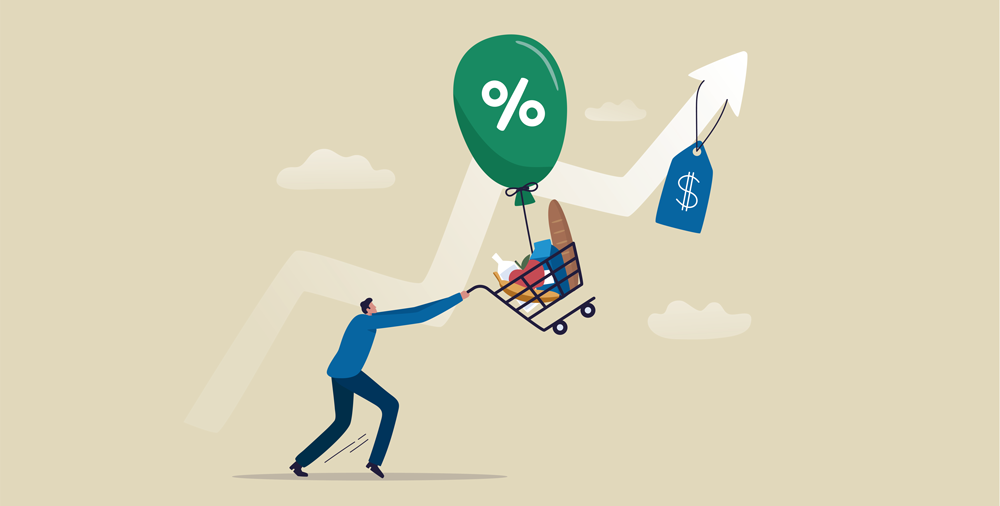Original source: www.salesforce.com
Don’t let margins be the Grinch that steals Christmas.
This era of inflationary pressure is unique because the cost of goods is rising faster than what can reasonably be passed on to consumers.
School’s out and temperatures are heating up. So is the economy. With rising gas prices, food shortages, skyrocketing interest rates and ever-present inflation, consumers are worried and will likely shift their buying behavior. And that means retailers are worried, too. In the face of uniquely challenging factors, the stars are aligning to deliver another “unprecedented” holiday season for the retail industry. How will Salesforce’s 2022 holiday shopping predictions shake out?
As we look beyond the pandemic, we’re seeing online shopping demand level off, with consumers finding a new balance between digital and physical channels. We’ve already predicted that the modest growth of the 2021 holiday shopping season could foreshadow this year, with our first-quarter data showing a 3% year-over-year decrease in global digital sales. But, given the significant surge of the last two years, there’s no cause for alarm relative to the health of online shopping.
We also can’t ignore inflationary pressures. In the first quarter, the average selling price (ASP) increased by 11% in the U.S. and shoppers placed 12% fewer orders worldwide compared to the same period in 2021. An early peek at second-quarter data indicates this trend is accelerating, with April and May showing a 7% increase in ASP on top of a 17% increase during the same period in 2021. This scenario sets up a battle across all sectors of the economy for brands looking to tap into consumer wallets as they shop for fewer items at fewer retailers.
Profitable differentiation will shape holiday shopping
Despite these economic headwinds, it’s no secret that the industry is seeing continued growth. In fact, record inflation has historically been a tailwind in catapulting revenues. But this era of inflationary pressure is unique because the cost of goods is rising faster than what can be reasonably passed on to consumers. In 2022, the trillion-dollar question is how do brands and retailers maintain growth, but do it profitably with an omnichannel approach?
Here are the key factors putting pressure on margins today:
- Increasing product costs: The Producer Price Index (or cost of goods) is still seeing double-digit spikes from a year ago, meaning that inflation will continue to rise. That will push selling prices even higher for the rest of the year.
- Increasing first- and last-mile costs: Gas and diesel prices are expected to continue rising, making fulfillment and returns more costly. (Some retailers are already charging for online returns to offset some of these costs.)
- Inventory shortages and overages: Food and raw material shortages are expected to worsen, adding more uncertainty to the tenuous global supply chain. Still, inventory surplus due to overbuying in 2021 has left companies with too much product on hand. They don’t want those big liabilities left on balance sheets.
- Declining consumption: Higher prices are driving down consumption. According to Salesforce research, 51% of consumers plan to purchase fewer holiday gifts this year.
- Consumer fears: Consumers already feel pessimistic about the economy, especially in the U.S. Consumer sentiment is at its lowest level since the metric was first tracked in the 1970s. This means consumers could pull back further on discretionary spending as they anticipate challenging economic conditions ahead.
We estimate that these economic challenges put $1.4 trillion in margins at stake for global retailers. But retailers can still achieve growth and profit if they plan early. Here are our five holiday shopping predictions to consider as you develop your strategy for the season:
Prediction 1: Shoppers will buy even earlier to avoid price hikes
While shopping sprees leading up to Black Friday happened before 2020, more and more shoppers bought in early November over the last two years due to inventory and supply chain issues. But this year, the main motivating factor driving early purchases will be inflation. According to Salesforce research, 42% more shoppers worldwide and 37% more in the U.S. plan to start buying gifts earlier – the No. 1 behavioral change this holiday due to inflation. They hope to snag their holiday gifts before prices rise too much.
While we predict that the ASP (average selling price) will increase monthly between 8% and 12% for the remainder of 2022, there is a silver lining for holiday shoppers: the return of discounting.
The inventory crisis of 2021 drove retail buyers to purchase too much in certain categories. Now that this 2021 inventory has finally reached warehouses, retailers have a new inventory problem: too much product, many in the wrong categories.
Now, to increase inventory turn and remove excess stock from their balance sheets, retailers will likely launch a highly promotional season starting in late summer. In fact, Amazon’s Prime Days on July 12-13 could be the official start to this year’s holiday promotional calendar. But don’t fret – a rising tide lifts all ships: the annual Prime Day event is the perfect time to launch your own campaign in the dog days of summer. Retailers other than Amazon historically see growth nearly double during Prime Day compared to the periods just before and after the event as shoppers get a jump on holiday shopping.
How to make the most of your promotional season?
- Participate in Prime Day. Not selling on Amazon? No problem. Prime Day shoppers engage across a myriad of brands and retailers outside of Amazon during the event. Don’t sit out on the Amazon halo effect.
- Don’t play discount chicken. Consumers likely are going to be holding on to their wallets until they are absolutely sure they’re getting a great deal. Focus early campaigns on scarcity, exclusivity, and sustainability to avoid discounting too early and too often.
- Prepare your site for early and late demand. Cyber Week demand has been spilling out into early November and late December (mostly due to the rise in buy-online-pickup-in-store). Ensure your site is prepared to handle demand across the season.
Prediction 2: Loyalty shifts to value
In 2020 and 2021, customer loyalty saw a huge shift to convenience and safety as consumers demanded a frictionless experience – often buying online from home and having the order fulfilled in or from the store. Now, as inflation rises, consumer loyalty is shifting again — this time to experience and value.
In fact, according to Salesforce research, half of all shoppers will switch brands this holiday due to pricing. This means that 2.5 billion shoppers worldwide could ditch their brand for a lower-priced competitor. Some product categories – including luxury brands, grocery, and department stores – are more susceptible to waning loyalty due to price sensitivity (either high prices or significant increases in prices).
Pricing and discounting strategies will be more crucial than ever to holiday success, as 17% of global shoppers (850 million) and 15% of U.S. shoppers (31 million) are unsure if they will buy any gifts this year. How can your business compete in an economy with an increasingly price-conscious shopper? Try these tactics to help capture your share of holiday revenue:
- Personalization: High- and low-income shoppers are facing two increasingly different economic realities. As low-income shoppers pull back on discretionary spending, higher-income audiences have yet to curb their pandemic shopping habits. By leaning into intelligent segmentation and personalization – driven by artificial intelligence – retailers can ensure they deliver the right product at the right price at the right time to the right customer.
- Digital marketplaces: With 16% of shoppers saying they will increase their use of digital marketplaces this holiday, marketplaces such as Tmall, Mercado Libre, and Google Shopping allow consumers to easily compare prices, navigate deals, and ensure quick shipping. Consider marketplace approaches this holiday to expand assortments on your site or offer products on third-party platforms.
Prediction 3: Physical stores will drive growth across all channels
Last year, stores had a significant impact on digital sales, with store associates expanding their roles to become fulfillment experts, service agents, social influencers, and digital stylists. In fact, 60% of digital orders are now influenced by the store – whether demand is generated or fulfilled. This year, with stores fully operational once again, we’ll see consumers gravitate to physical locations in even greater numbers.
There’s real opportunity for retailers with both physical and digital stores to grow faster than digital natives and e-commerce brands. Merging shopping across both digital and physical spaces enhances the value of each channel. We predict that retailers with physical stores will grow online sales at a rate 1.5 times faster than those without.
While there is an upside for those with brick-and-mortar locations, there also are potential operational challenges as well:
- Experience versus cost: Consumers are gravitating to stores for the in-person experience they’ve missed. The downside for retailers? Labor costs have skyrocketed. The pressure on labor costs may only continue to mount this winter as we predict workers will face a nearly 200% increase in costs to work – on gas, meals, and clothing. Any increases in laborer wages will also eat directly into margins if not managed effectively.
- Demand versus inefficiencies: Physical channels experienced a significant boost over the past two years due to creative store fulfillment options like buy-online-pickup-in-store. Online fulfillment through physical channels will continue to propel the store’s growth. But unresolved inefficiencies threaten to undermine this lift. For example, store associates should get measured on fulfillment metrics if they are picking and shipping. And perhaps we should measure social engagement if these brand advocates are asked to be influencers.
- Service versus complexity: Stores will once again be customer service destinations this holiday – whether shoppers interact in a physical store or via text, email, chat, or video. The trend of routing queries to local associates will continue to accelerate. Based on our research, 25% more customer service engagements this holiday – both physically or virtually – will involve associates compared to 2019. To maximize these opportunities, retailers must arm store associates with digital tools and online access. This may mean addressing the reality that associates access an average of 14 different applications daily – compounding labor and efficiency challenges.
Prediction 4: Shoppers will gravitate toward sustainable options
The cost of doing business is not only becoming more expensive, it’s also becoming more complicated. Over the last two years, new expectations have increased in importance to consumers – trust and impact. We’ve found that 88% percent of consumers now expect brands and retailers to clearly state their values. And shockingly, 64% will stop doing business with a company if corporate values don’t align with their own.
This is especially true when it comes to the environment. According to Salesforce research, 83% of shoppers will seek out sustainable brands and products this holiday. In fact, after a company’s treatment of customers and employees, its environmental practices are the top factor influencing buying decisions, placing the importance of sustainability initiatives ahead of actions around racial and economic justice.
But while consumers have long claimed they preferred sustainable goods, that didn’t always prove out in their buying behavior. Our latest research suggests that this has shifted, with 42% of shoppers saying they will consider paying more for sustainable shipping options or select a longer delivery window. How else can you attract the environmentally savvy shopper in an era of price sensitivity? The answer is two-fold:
- Consumers crave transparency. Be up front about your company’s climate action plan and ongoing performance. While shipping, real estate, and raw materials are important factors, our research tells us that packaging and labeling transparency are the top two sustainability factors that earn trust.
- Don’t price out consumers. Yes, consumers will pay more, but they won’t pay that much more. The sweet spot is keeping premiums under $2 for shipping. And for those unable to pay, most show a preference for accepting longer delivery times, so give them options at checkout.
Consumers expect brands to be honest about their carbon footprint, so be prepared to account for your emissions. We are still in the early innings, though, so don’t despair. Today, 81 of the Digital Commerce 360 top 100 online global retailers publicly report sustainability initiatives regularly. However, based on our analysis, only 23% will promote sustainable practices – in shipping options, on the homepage, or within the product detail page – this holiday season.
Prediction 5: Retailers will test NFT drops
Every holiday shopping season, a handful of items become the “it” gifts everyone wants to give. This season’s hot collectibles come straight out of the metaverse. In fact, 46% of shoppers said they would consider purchasing non-fungible tokens (NFTs), a digital asset that represents something unique or scarce stored on a blockchain. This could be a virtual version of a real item or a digital collectible. Younger shoppers particularly are drawn to “digital twins” — a digital version of a physical good. Gen Z is four times more likely than Gen X to buy a physical good if it is paired with a digital twin this holiday.
Nonetheless, NFT purchases are still in an exploratory phase. And while the market for digital assets is small, expect retailers and brands to test new ideas and capitalize on the buzz this holiday season. Based on our estimates, we predict that approximately half a million NFTs will be purchased from retailers and brands between November and December, with a potential total market value of $54 million. While we are a bit measured on the seasonal impact of NFTs, some shoppers will seize what they see as unique opportunities:
- Loyalty and access: While only 12% of consumers say they’ve purchased an NFT, this market is poised for growth – 45% of consumers report interest in buying one. Consumers will gift NFTs this holiday primarily for the exclusive access many offer to communities, products, and physical experiences. In fact, 19% of Gen Z say a top reason for purchasing NFTs is to be more involved with the brands offering them.
- Value and ownership: In light of the current economic challenges, consumers see digital assets as more than just something to show off to friends. Salesforce research found that the No. 1 reason consumers want to buy an NFT is the potential for a return on the investment. It’s this generation’s equivalent to the savings bond – with the hope of higher upside!
- Identity and control: While not a major driver this holiday season, the next evolution in this market – people managing their own digital identities – will put consumers in the driver’s seat. NFTs are stored on a blockchain that makes it easy to syndicate consumer information (like profile, loyalty, transaction history, and preferences). It also allows the data to be applied across various retailers and gives consumers more control over their online identities, which they can share with their favorite brands. Why? Like a loyalty program, consumers share this data in exchange for things like deals, access, and perks.
Put our holiday shopping predictions to work
For retailers, 2022 is about playing the long game. Economic challenges and shifting consumer preferences mean that leading with a data-driven strategy will be critical to reacting to conditions in real time. And while we can’t stop inflation, we can recession-proof our businesses by improving profitability and solving for operational inefficiencies.













